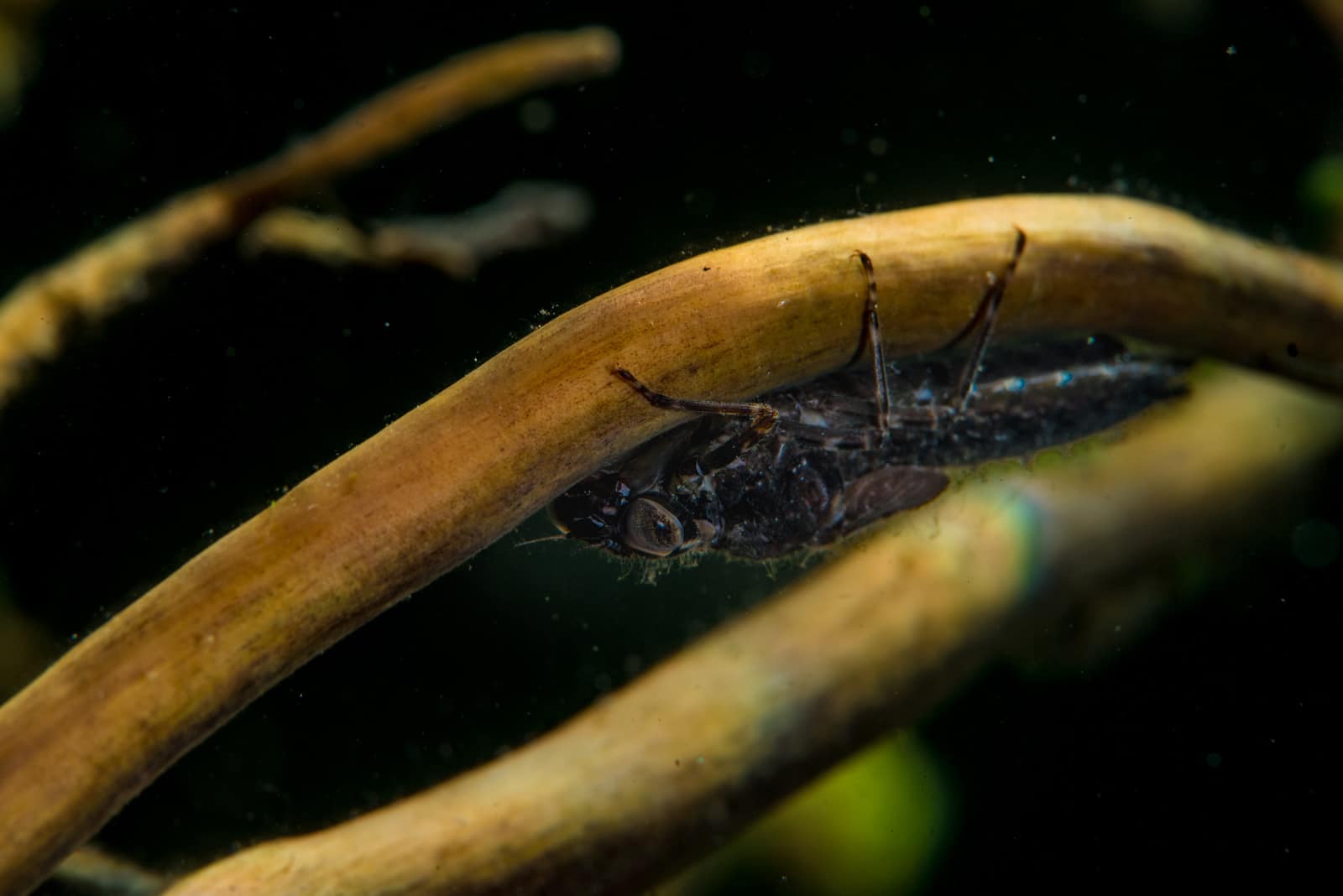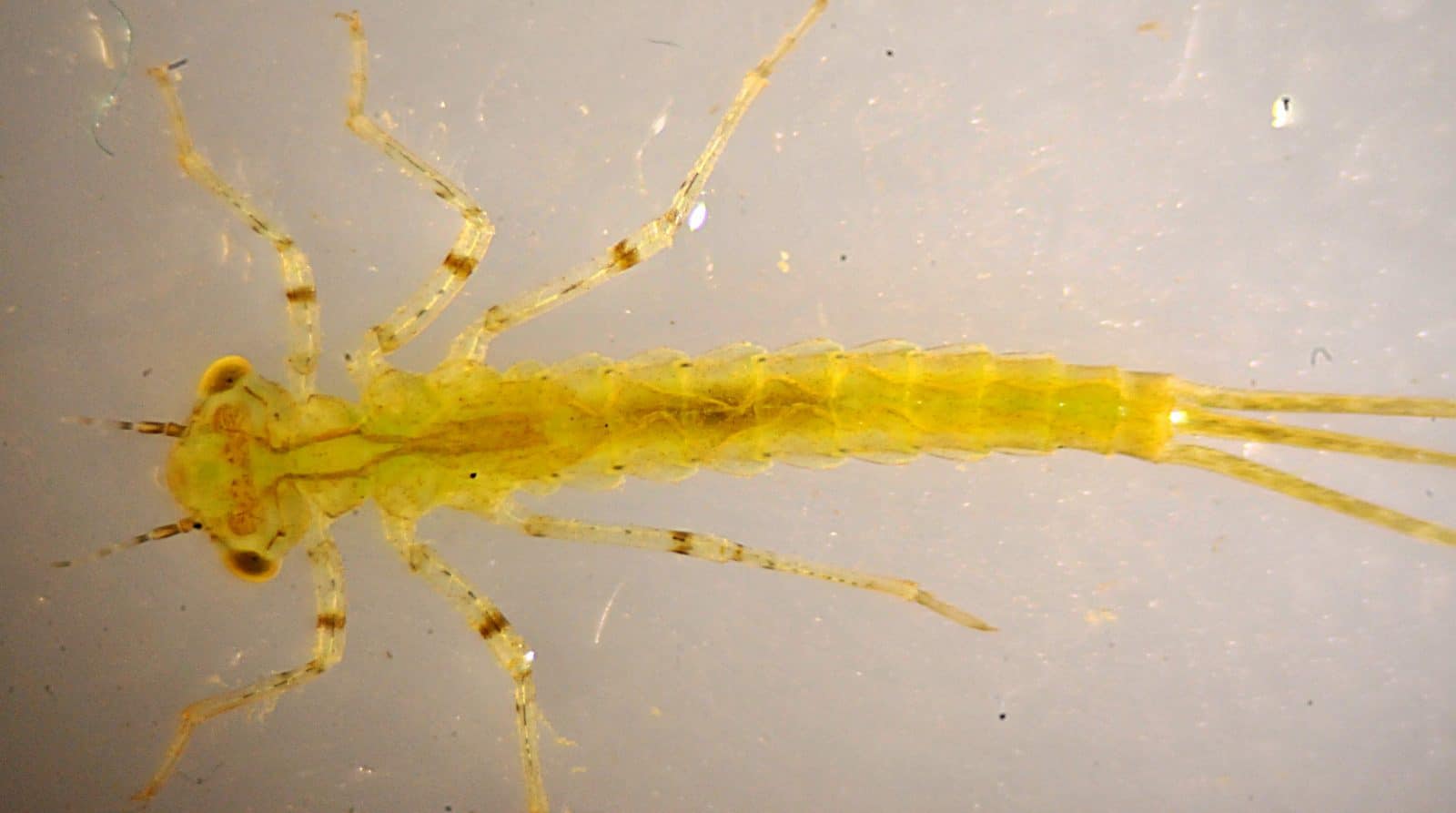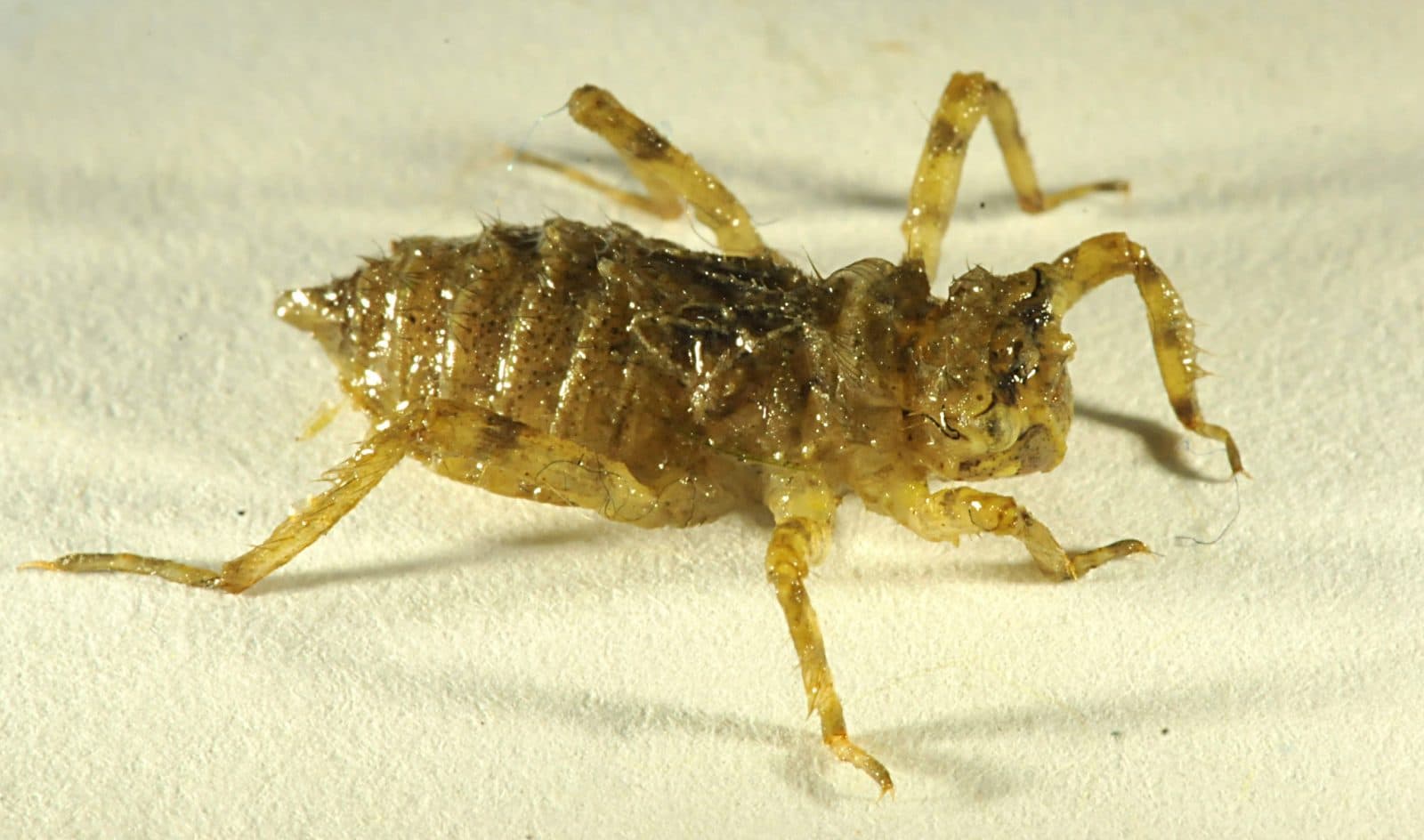- 9 families and 409 species in North America
- 2 main groups, Dragonflies, and Damselflies
| Phylum: | Arthropoda |
| Class: | Insecta |
| Order: | Odonata |
Identification Tips:
Larvae
• Lower jaw large and hinged to extend outward rapidly
• 3 pair of segmented legs, each ending with 2 claws
• No gills on sides of abdomen
• Dragonfly larvae: Stout body with head narrower than rest of body; Three short stiff spines at end of abdomen
• Damselfly larvae: Body long and slender with head wider than rest of body; Three long flat gills extend from rear of abdomen
Adults
• Large head with prominent compound eyes
• 20-85 mm body length
• Wings membranous with many veins
• Dragonflies hold wings horizontally outstretched when at rest
• Damselflies fold wings vertically over back when at rest
Life History:
Predatory
• Larvae capture prey with extendable lower jaw, adults capture insects in flight
• May crawl, climb to stalk prey or wait, sometimes partially burrowed into mud to ambush
• Dragonfly larvae employ jet propulsion by expelling water from anus
• Most have one year life cycle, but some dragonflies require 2 or 3 years
• Larvae are aquatic, and most live in still waters
• Larvae crawl out of water and adult form bursts out of skin
• Must dry wings for several hours prior to flight
• Adults live a month, on average
• Most mate in flight and eggs are deposited in the water
| POLLUTION TOLERANCE | ||||
| Very Sensitive | Somewhat Sensitive | Facultative | Somewhat Tolerant | Very Tolerant |
| Some | Some | Some | Some | Some |
––––––
Primary Information Source:
Voshell, J. Reese. 2002. A Guide to Common Freshwater Invertebrates of North America. McDonald and Woodward Publishing Company. Blacksburg, Virginia.




